THE THOUSAND EYES OF DR. MABUSE (1960)
In 1960s Germany, criminal mastermind Dr Mabuse uses hypnotised victims and the surveillance equipment of a Nazi-era bugged hotel to steal nuclear technology from a visiting American industrialist.
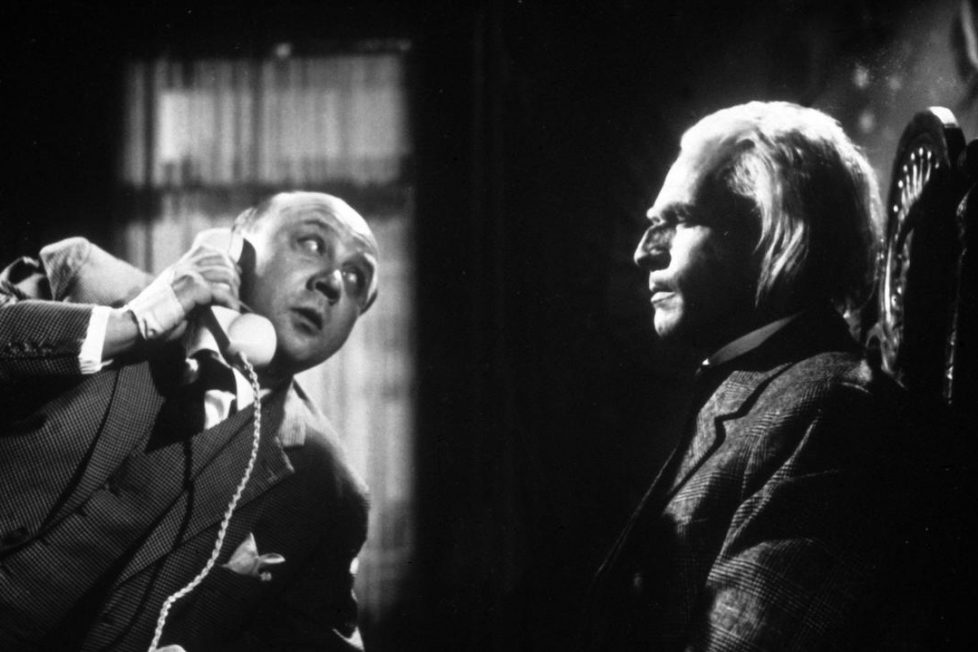
In 1960s Germany, criminal mastermind Dr Mabuse uses hypnotised victims and the surveillance equipment of a Nazi-era bugged hotel to steal nuclear technology from a visiting American industrialist.


The assassination of a journalist using a state-of-the-art gun is witnessed over the ether by a blind psychic, Peter Cornelius, who warns the police, but too late. The method reminds the police of criminal mastermind Dr Moriarty, whoops, Mabuse (Preiss). But Mabuse died decades ago, we even see his grave.
Meanwhile, in the Hotel Luxor, a stir is caused by glamorous guest Marion Menil (Dawn Addams) being talked down from a ledge by rich American businessman Henry B. Travers (Peter van Eyck). The Nazi-built Luxor has been at the centre of a growing chain of Mabuse-like events and Police Inspector Kras is dispatched to investigate. The last piece of the puzzle is insurance agent, Hieronymus B. Mistelzweig (Werner Peters), who loiters in the bar, in the corridors, and in the lift, trying to sell policies to anyone for anything. All the while we see glimpses of our protagonists witnessed on CCTV cameras, watched by someone, somewhere. What does it all mean? And where on earth is this plot going?
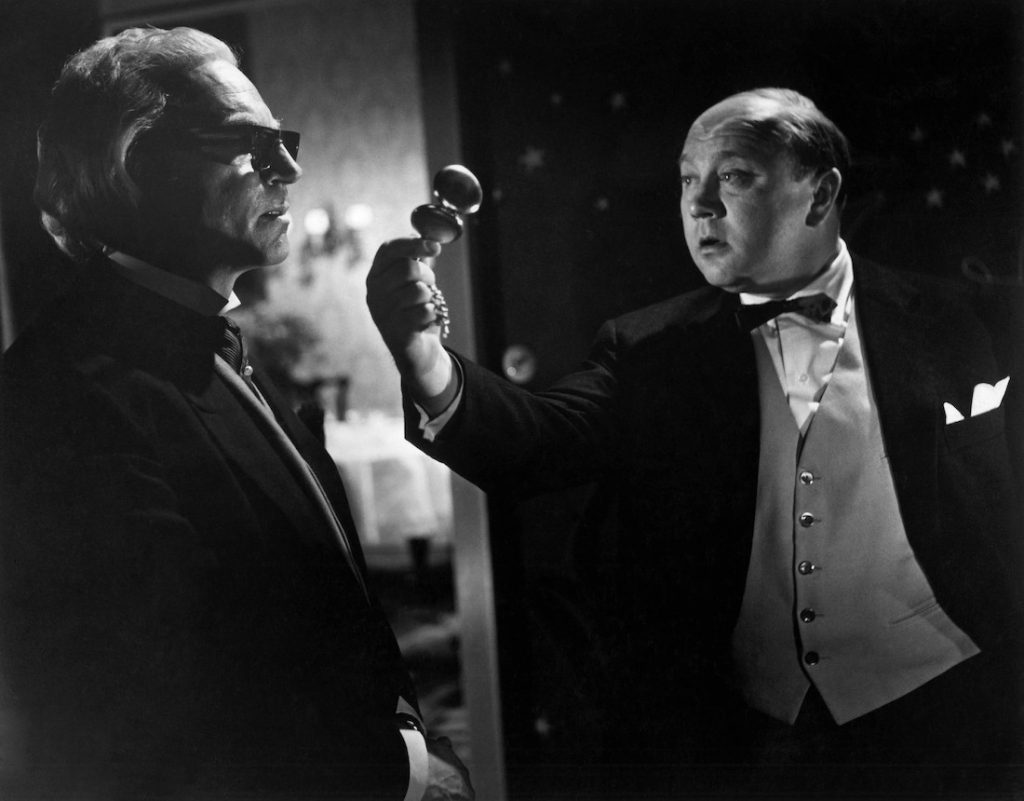
Co-writer and director Fritz Lang had made two Mabuse films before. The first was a 1922 four-and-a-half-hours-long silent adaptation of Norbert Jacques’ novel Dr. Mabuse the Gambler, about an amoral hypnotist, gambler, manipulator, and criminal. The second was a 1933 original sequel, The Testament of Dr. Mabuse, in which a captured Mabuse dies but his ghost occupies the body of his asylum doctor and continues to plan crimes. This second movie was banned by the Nazi’s because of Lang’s deliberate allusions to Hitler in the Mabuse character. It’s been remarked that Lang was only interested in the Mabuse character when he had something to say about Germany, and yet none of this knowledge helps prepare you for what Lang would do with a second sequel 27 years later when his title character is dead.
Lang and co-writer Heinz Oskar Wuttig keep the plot developments coming thick and fast: coded radio messages, an exploding telephone, a sniper, a burnt-out lair, more psychic visions.. and at the centre of it all is the developing romance between a wealthy businessman and an abused wife. Sometimes it feels as though the story will never resolve itself, and perhaps will never resolve itself, and yet it blossoms into a final reveal so simple that it’s almost disappointing.
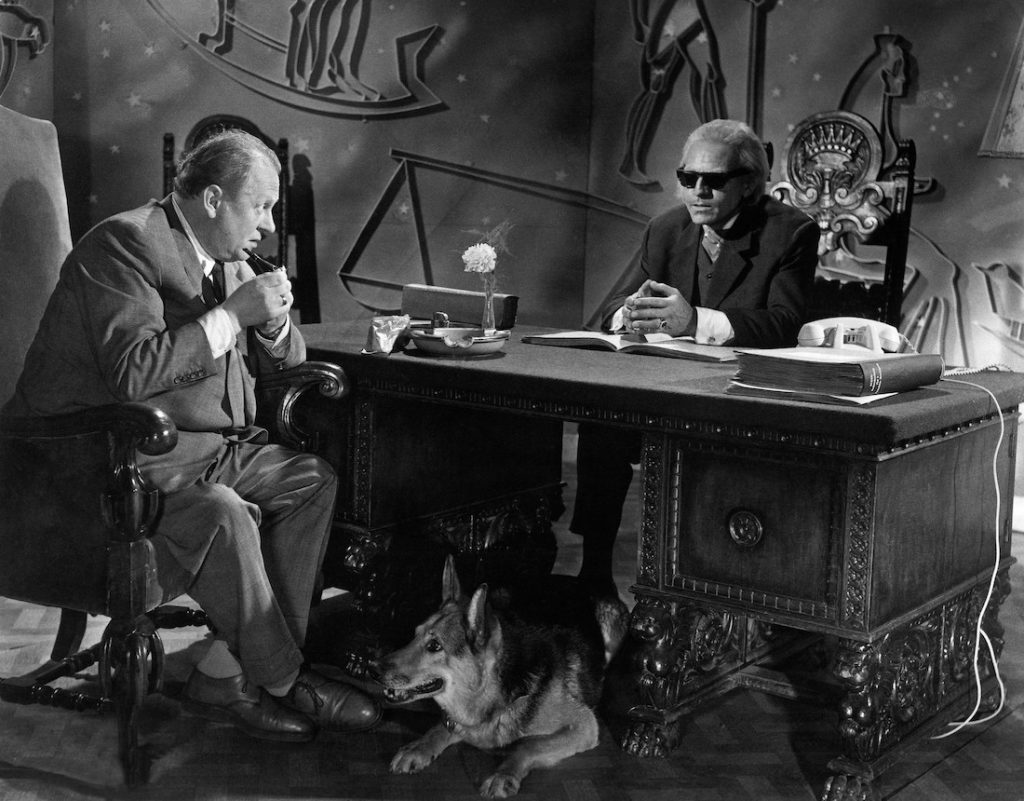
Beyond the outdated back projection, Lang displays a magnificent command of his craft in this, what was to be his final cinematic work. Ideas as simple as cutting from the sound of the inspector banging his pipe on an ashtray to his fist banging on a hotel door. Little things like ending a dialogue scene on the mention of a specific character, then cutting immediately to a close-up of that character as they begin a new scene. The pacing is spot on thanks to Walter and Waltraut Wischneiwsky’s editing, zipping through opening scenes of exposition and slowing down when many of our disparate protagonists gather for a seance or a drink in the hotel bar.
Karl Löb’s excellent widescreen cinematography makes great use of Erich Kettelhut and Johannes Ott’s atmospheric but convincing sets too. Gerhard Becker’s score sets the right tone but never intrudes, and (an uncredited) Heinz Stamm’s makeup is the stuff of miracles for a reason I can’t explain without straying into spoilers.
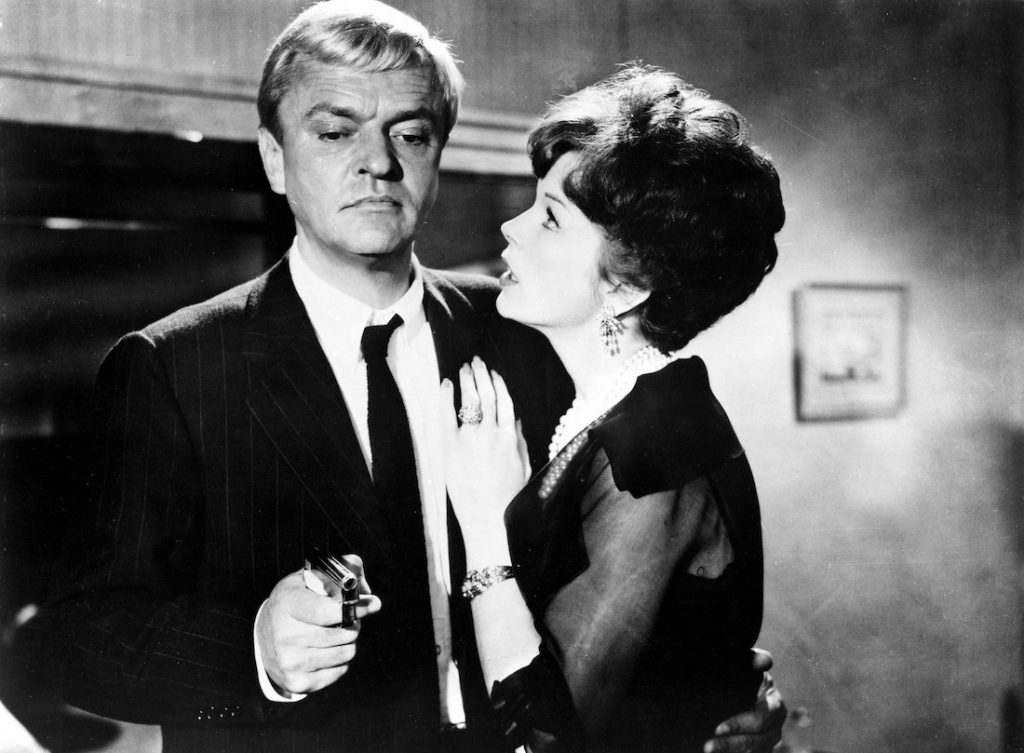
Where the film proves a letdown is in its performances. Peter van Eyck is less convincing than the terrible back-projection and more wooden than the sets. As a romantic interest, he’s a vacuum of charisma at the centre of the film and drags the middle section of the story down to something plodding and (almost) predictable. Dawn Addams gives a good performance that has been sloppily dubbed (even in the German-language version), but her role isn’t as fleshed out as it should have been. Gert Fröbe is bullish as the inspector, whom one assumes is the hero of the story until you later realise he has no idea what’s going on! Whether Fröbe was meant to come across as quite so gormless appears to be a matter of debate amongst critics.
However, there are two great performances in The Thousand Eyes of Dr. Mabuse. The first is given by Werner Peters as the insurance agent Mistelzweig. Almost every character in the film is concealing their identity in one form or another, and Peters slowly reveals his character’s true nature through masterful strokes that also give great credit to the script. And then there’s the performance of Wolfgang Preiss, a performance so overpowering that it spawned several sequels. I’m not going to reveal which character Preiss plays, as even that would be a spoiler, but it’s thanks to his performance that the film finally pulls together into a satisfying whole—just at the point that it seemed to be unravelling.
So, ultimately, what is Mabuse? A Sherlock Holmes-style adventure crossed with hard-boiled noir? A successor to the cheap and disposable serials like The Curse of the Crimson Skull? A post-war German surveillance fable, capturing the atmosphere that would lead to the Berlin Wall and the Stasi? The answer, of course, is all these things. Lang was only interested in the genre trappings of the Mabuse stories so long as they allowed him to pass comment on the political and social situation in Germany. It’s only fitting that his final movie should combine his high-brow storytelling aspirations (Metropolis) with the unquestionable mastery of his craft (Nosferatu), even if it doesn’t coalesce into something perfect like The Woman in the Window (1944). A great film? Perhaps not. An interesting one? Definitely.
WEST GERMANY • FRANCE • ITALY | 1960 | 103 MINUTES | 1.66:1 | BLACK AND WHITE | GERMAN

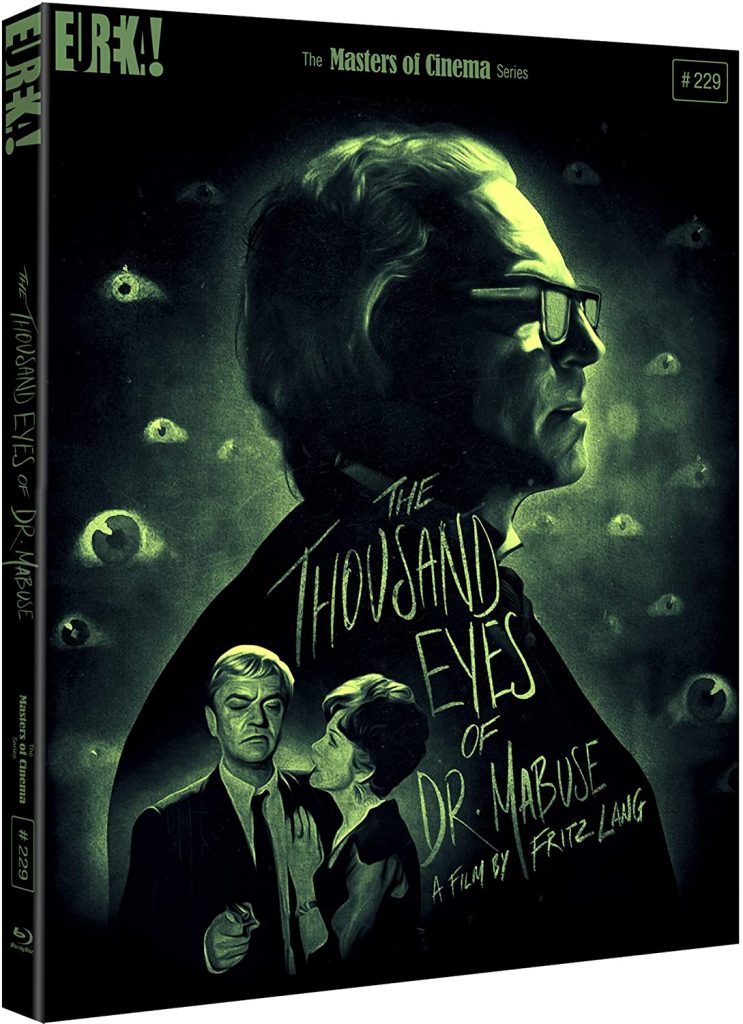

director: Fritz Lang.
writers: Fritz Lang & Heinz Oskar Wuttig (based on ‘Mr. Tot Aĉetas Mil Okulojn by Jan Fethke.)
starring: Dawn Addams, Peter van Eyck, Gert Fröbe, Werner Peters, Wolfgang Preiss, Andrea Checchi, Howard Vernon & Reinhard Kolldehoff.
